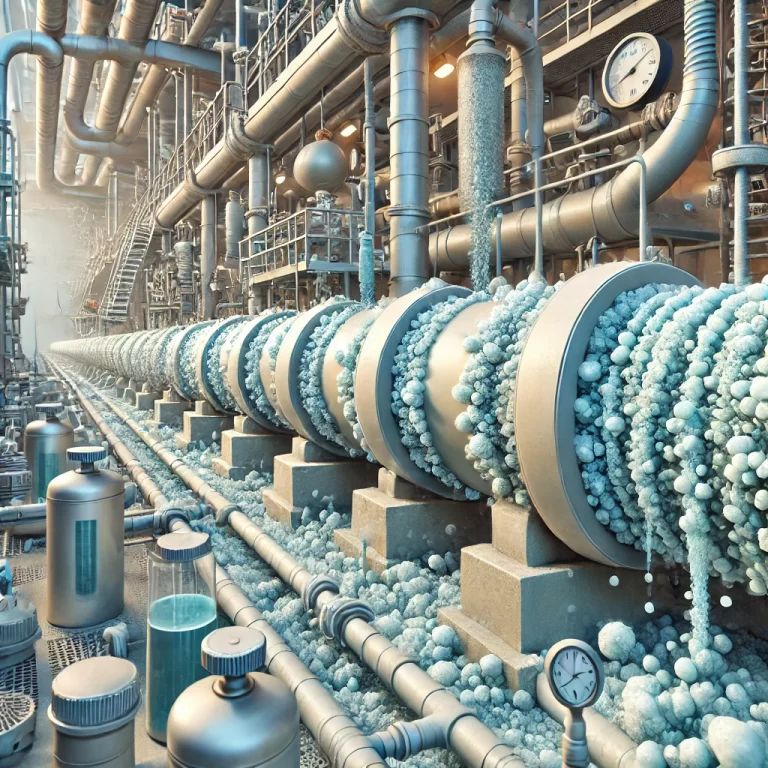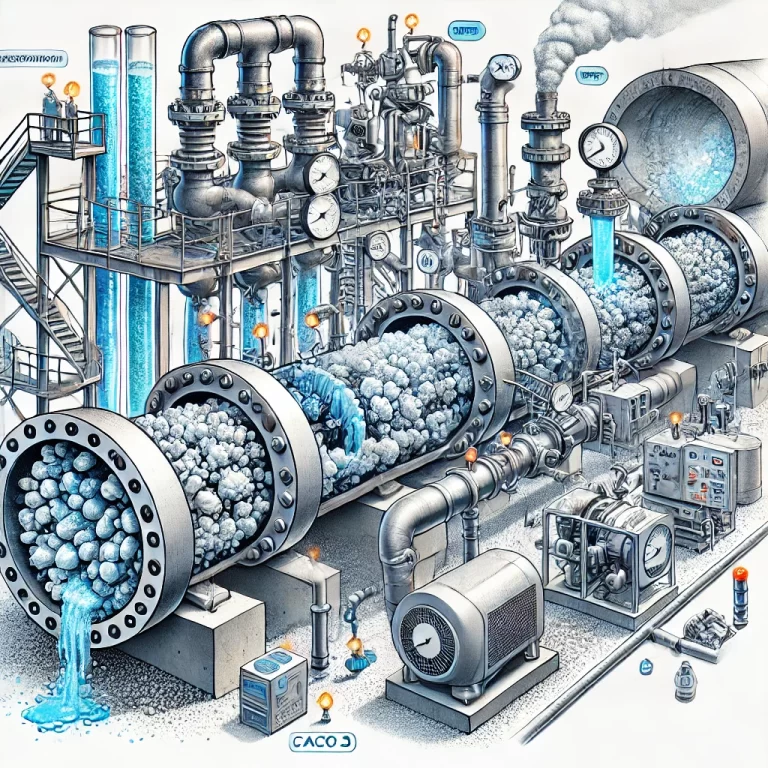Crystallization in steam pipelines is a common issue that can lead to significant operational problems such as reduced efficiency, increased maintenance costs, and potential system failure. Understanding the various factors that contribute to crystallization is essential in preventing it and ensuring the proper functioning of steam systems. Below are the primary causes of crystallization in steam pipelines and suggested preventive measures.
1. Influence of Chemical Composition
The chemical composition of water used in the steam system plays a crucial role in crystallization. Steam pipelines may contain ions such as calcium (Ca²⁺), magnesium (Mg²⁺), sulfate (SO₄²⁻), and carbonate (CO₃²⁻). Under certain conditions, these ions can form crystallized compounds like calcium carbonate (CaCO₃) and calcium sulfate (CaSO₄). These compounds tend to accumulate and adhere to the inner walls of pipelines, gradually forming scale deposits. The concentration of these ions is directly correlated with the likelihood of crystallization, meaning that higher concentrations of crystallizing ions will lead to more severe scaling.
Preventive Measures:
- Water Treatment: Pre-treating steam water to reduce the concentration of calcium, magnesium, and sulfate ions can significantly minimize the risk of crystallization.
- Ion Exchange: Employing ion exchange systems to remove hardness-causing minerals can also be an effective approach in maintaining water quality.

2. Temperature Fluctuations
Temperature has a significant impact on the crystallization process. The solubility of certain salts, such as calcium sulfate, decreases with rising temperature. When the temperature exceeds a certain threshold, these salts precipitate from the solution and settle on the pipeline walls. Additionally, temperature fluctuations can create regions of supersaturation, which further promotes the crystallization of salts.
Preventive Measures:
- Temperature Control: Maintain a consistent temperature in the steam pipeline to prevent sudden temperature changes that might lead to salt precipitation.
- Insulation: Proper insulation of pipelines can help stabilize the temperature and prevent localized temperature drops that promote crystallization.
3. Operational Conditions
Improper operational conditions are another significant factor leading to crystallization. For example, when the liquid level in the system is too low or when there is a sudden increase in heating steam, it can result in a decrease in static liquid pressure. This pressure drop may cause the solution within the pipeline to vaporize prematurely, triggering the crystallization of salts. Additionally, frequent fluctuations in operating parameters can destabilize the system and increase the likelihood of crystallization.
Preventive Measures:
- Stable Operations: Ensure that operating conditions are stable, with minimal fluctuations in pressure and temperature.
- Pressure Control: Keep the pressure within optimal levels to avoid premature boiling and salt precipitation.
4. Pipeline Design and Fluid Dynamics
The design of the pipeline and the dynamics of fluid flow play a significant role in crystallization. Areas of low flow or dead zones within the pipeline are particularly prone to the deposition of crystallized substances. Additionally, horizontal pipelines tend to accumulate more crystallization compared to vertical pipelines due to the different flow characteristics.
Preventive Measures:
- Optimized Pipeline Design: Design pipelines with minimal dead zones and ensure that the fluid flow remains sufficiently high to prevent the settling of crystallized particles.
- Regular Inspections: Conduct regular maintenance and inspection of the pipelines to identify and address areas of stagnation or low flow where crystallization is more likely.
5. Long-Term Operation and Material Aging
Prolonged use of steam pipelines can lead to the aging and degradation of materials, which in turn can affect the mechanical properties of the pipes. As materials wear down over time, the roughness of the internal surface of the pipe increases, creating more sites for crystallization to occur. The accumulation of scale also accelerates wear and tear, which can further exacerbate the problem.
Preventive Measures:
- Material Selection: Use corrosion-resistant and high-performance materials for steam pipelines to extend their lifespan and reduce the risk of crystallization.
- Scheduled Maintenance: Implement regular maintenance schedules to monitor the pipeline’s condition and prevent long-term damage.
6. Influence of Organic Compounds
In some cases, organic compounds may be present in the steam system, especially if the water used contains organic impurities. These organic materials tend to concentrate under high temperatures, adhering to the inner walls of the pipeline. In combination with inorganic salts, organic compounds can exacerbate the crystallization process and lead to more severe scaling.
Preventive Measures:
- Filtration: Use filtration systems to remove organic impurities from the water before it enters the steam system.
- Chemical Additives: Consider using chemical additives designed to prevent the buildup of organic substances on the pipe walls.

7. Water Quality Issues
Water quality is one of the most critical factors in the formation of crystallization. High hardness water, typically containing elevated levels of calcium and magnesium ions, promotes the formation of scale when these ions combine with other components such as carbonates or sulfates.
Preventive Measures:
- Water Softening: Implement water softening systems to reduce the hardness of the water used in the steam system.
- Monitoring: Regularly monitor water quality to ensure it remains within acceptable limits and prevent scaling.
Conclusion
Crystallization in steam pipelines is a multifaceted issue that arises due to several factors such as chemical composition, temperature fluctuations, operational conditions, pipeline design, and material aging. By understanding these causes and implementing the appropriate preventive measures, it is possible to minimize crystallization and reduce maintenance costs. Regular inspections, water treatment, temperature control, and optimized pipeline design all contribute to a well-functioning steam system with minimal crystallization issues.
By addressing these factors, steam system operators can significantly extend the lifespan of their pipelines, enhance operational efficiency, and ensure the smooth operation of their facilities.
